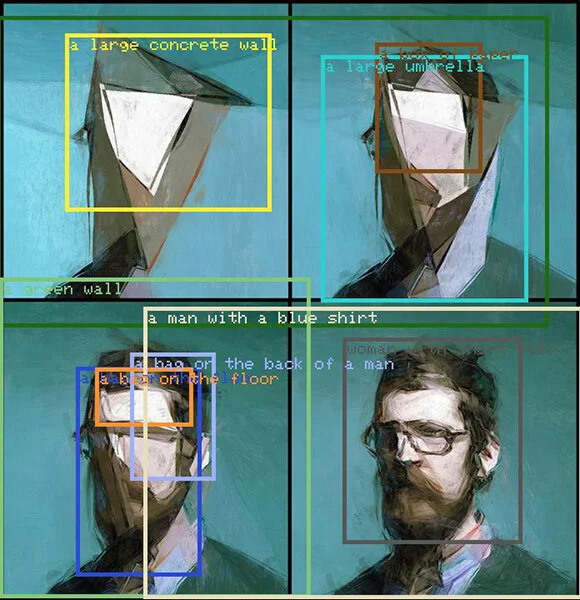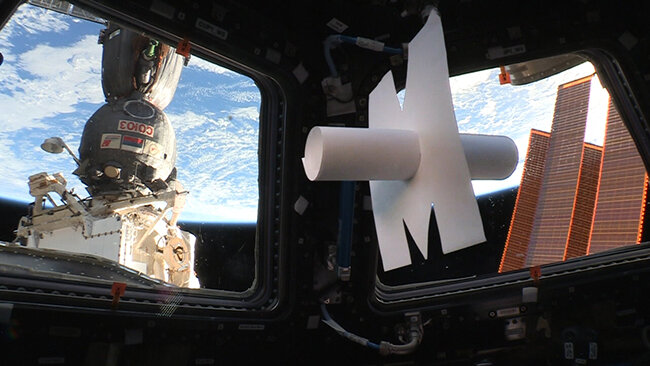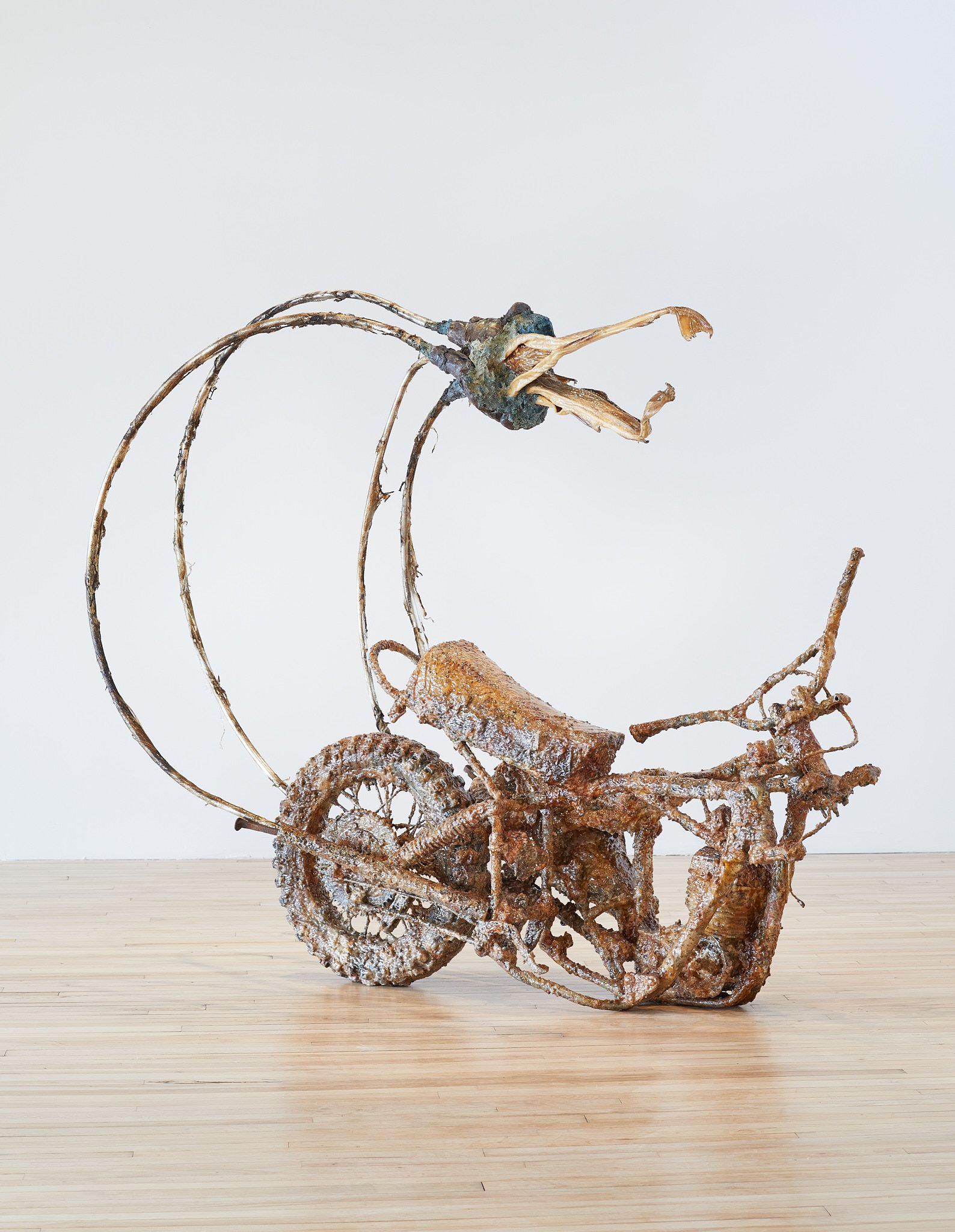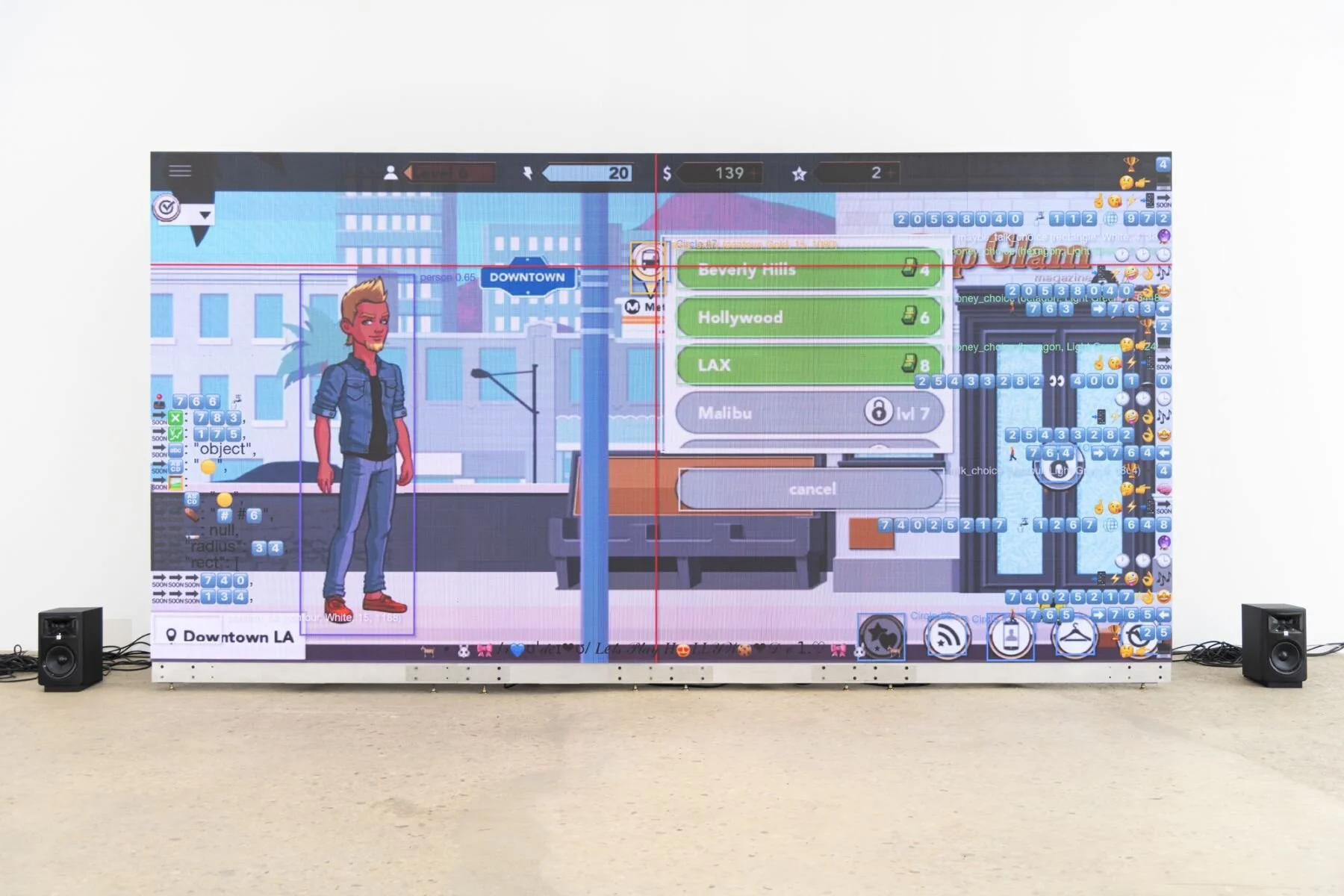Media Art and Electronic Literature in Montreal
It’s not exclusively electronic, nor is it necessarily literary, but it’s all exhibited under the banner of electronic literature. For their annual conference, this year at L’Université du Québec à Montréal, the Electronic Literature Organization (ELO)—a group dedicated to the propagation and preservation of such media—put on a materially and conceptually diverse exhibition of dozens of e-lit works at the university’s Galerie du Centre de Design. The conference’s bi-lingual theme, Attention à la marche! / Mind the Gap! references the many voids in scholarship, representation, and preservation that the global e-lit community is trying to fill, and this associated exhibition features works that show progress towards this goal.
Screenshot of Arriving Simultaneously on Multiple Far-Flung Systems by Judy Malloy.
Judy Malloy’s Arriving Simultaneously on Multiple Far-Flung Systems was shortlisted for the ELO’s award for the year’s most outstanding work of e-lit at the conference’s concluding banquet. It is presented as a matrix of constantly changing narrative fragments that eventually tell the story of a woman who worked as a programmer in the 1960’s and 70’s. Its disjointed interface and narrative structure mirror the technology of the time, when stacks of punch cards were used to input data and gaps or alterations in the sequence of cards would lead to unpredictable results.
Installation view of Nanowatt by Nick Montfort. Photography by Vinicius Marquet. Image courtesy of the artist.
Continuing with the theme of vintage technology, Nanowatt, a program by Nick Montfort, displays sections of Samuel Beckett’s novel Watt on a 1980’s Commodore VIC-20 computer. Beckett’s original text from 1953 could be seen as a work of proto-electronic literature; as Montfort put it during the opening, “it was a digital text written without a computer”. Throughout the book, the characters Watt and Knott and their activities are described in iterative litanies: one of them may pace “from the fire to the window, from the window to the fire, from the fire to the bed, from the door to the fire” ad infinitum. Montfort’s digital interpretation of the book isolates these passages and allows the computer to iterate through them in English and French, outputting the result to a CRT monitor. Montfort characterized the creation of Nanowatt as an act of reading: One can attempt to read Beckett’s text aloud or internally, but its programmatic features frustrate such attempts. In creating a program to reconstitute the text, Montfort found a way to understand it from its own perspective, through the acts of iteration and repetition.
Screenshot of Style Guide for Erasing Human Dignity by Laura Zaylen. Image courtesy of the artist.
Another work that combines computation and print is Laura Zaylen’s Style Guide for Erasing Human Dignity. A small printed book with some pages intentionally erased or ripped out, it can be read on its own, but its purpose and themes become apparent when viewed through an augmented reality app. Based on the Trump regime’s countless abuses of language, including the erasure of Spanish-language and LGBT resources from the White House website and the FDA’s infamous list of “forbidden” words, the book’s illustrations—which double as AR targets—show books and words going up in flames. Layered on top of these images are bits of poetry and prose that appear through the AR interface and provide commentary on, and counterpoints to, the cynically-written style guide. Taking inspiration from the same ever-blazing garbage fire, Alan Sondheim’s video work americanlife merges poetry with footage from glitched computer games to create a pulsating six-minute nightmare. A humanoid figure flops around like a ragdoll, flying through a malfunctioning world overlaid with poetry. As the land convulses and transforms, the words “Welcome to America” appear in large golden letters. That feeling of vulnerability one has when technology fails can be connected to the tragic vulnerability created by the failures of society, glitches in the political system that draw attention to the workings of power that used to lie out of sight.
Still from americanlife by Alan Sondheim. Image courtesy of the artist.
Meaning and Abstraction by Steve DiPaola is another work that takes advantage of glitched systems. A deep-learning AI, normally used for mundane tasks such as blurring out faces and license plates in Google Maps, was trained on a corpus of paintings and made to identify images and video footage modified by another AI to resemble such works. Images in varying degrees of abstraction are presented on TVs in the gallery, and while the human eye can plainly see the correlation between them, the AI sees nonsense. More than a showcase of artificial stupidity, Meaning and Abstraction uses the AI’s guesses to create a series of poetic mental images generated from actual images. Yes, the AI is technically incorrect on a literal level, but on a literary level its errors are insights that a human viewer may miss.
Still from Meaning and Abstraction by Steve DiPaola. Image courtesy of the artist.
The largest work in the exhibition is by Eduardo Kac and, aside from the digital video showing it, isn’t electronic. Kac’s best-known work is in the field of bio-art: He encoded text into bacterial DNA and allowed it to mutate, eventually re-sequencing and presenting the resulting “glitched” work. He continues to push the question of “what is writing?” farther and farther, now up to the International Space Station. As an artist-in-residence at the European Space Agency, Kac worked with them to develop a poem with a form uniquely suited to a microgravity environment. The resulting work, Inner Telescope, was assembled and filmed in space by astronaut Thomas Pesquet. The poem is a three-dimensional monogram of the letters “M”, “O” and “I” that can be read from any angle or direction and floats freely on the space station’s artificial air currents. The poetry in this work doesn’t lie in the words themselves, but rather in what their form represents: humanity floating untethered from the earth, drifting into an uncertain future among the stars.
Installation view of Inner Telescope by Eduardo Kac. Image courtesy of the artist.
















